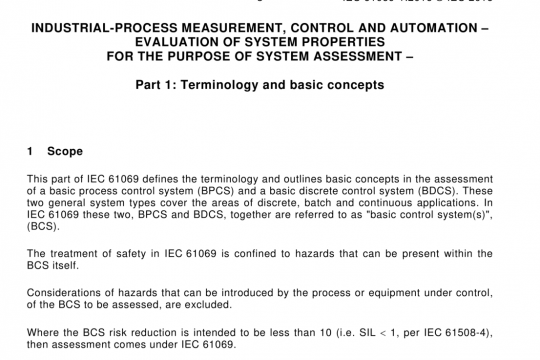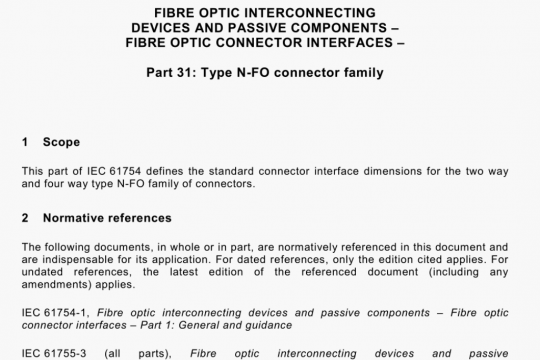IEC TR 62959 pdf free download
IEC TR 62959 pdf free download.Optical fibre cables – Shrinkage effects on cable and cable element end termination – Guidance.
Excessive shrinkage of cable elements and cable sheath can have severe impact on optical fibre cables due to compressive forces applied to the fibres, especially in cable designs not providing a rigid longitudinal reinforcement member. In a cable, the shrinkage of one element/layer is rarely independent from another. Friction between the different elements plays a major role and the behaviour of a cable end is different than the middle of the cable.
A buffer, cable element or sheath can be manufactured using pressure extrusion or tube extrusion. In pressure extrusion, the melted plastic contacts the inner cable elements long before it reaches the die end. This is done at a high pressure to ensure good adhesion of the plastic material. Generally, such manufactured plastic layers have low shrinkage after extrusion but transfer high forces due to a tendency to shrinkage to the underlying cable elements. If adhesion is not desired or necessary, then tube tooling and tube extrusion are used instead. A plastic layer extruded as a tube has the benefit that the thermal expansion or contraction of the plastic causes no, or only limited, forces on the underlying cable elements. Therefore, the cable design has a major impact on what level of shrinkage leads to an increased attenuation.
The fibre should not be overly stressed by reversible thermal expansion and contraction or by irreversible thermal contraction (shrinkage) of cable elements and cable sheath. Enough space for the fibre in a cable (e.g. buffer or tube) does not necessarily restrict the stress on the fibre thoroughly. A tight buffer can typically limit the stress to the fibre effectively and better than a loose buffer (semi-tight). Multi-fibre loose tubes that are often used in multi-fibre cables contain space for the primary coated fibres and jelly or water swellable materials. These loose tubes can restrict stress to the fibres to an acceptable level. On the other hand, fibre overlength storage room and enough space for fibre bends in, for example, a passive component or splice cassette can limit the stress on the fibre effectively.
5.4 Basic cable types
Table 2 provides typical characteristics of two basic cable types, indoor and outdoor, that have different key design features, different key performance parameters and different applications. The typical characteristics for the two basic cable types in Table 2 are not complete and are not applicable in all cases. As well as these two basic cable types, indoor-outdoor cables exist for universal or partly restricted indoor and outdoor use — see IEC 60794-6 (all parts) [21].
5.5.3 Cable shrinkage characteristic
Low cable shrinkage does not necessarily influence the attenuation performance of a cable because they are not directly linked to each other. Likewise, high cable shrinkage does not necessarily cause poor attenuation performance of a cable. For example, a certain shrinkage of the cable sheath can cause different forces to the inner cable elements depending on the Young’s modulus of the sheath material, on the volume of the material and on the cable construction. As explained in 5.2.4, the resulting force caused by shrinkage is also an important indicator of the performance of the cable. Additionally, a correlation of cable shrinkage to attenuation performance is not possible between different cable types nor between similar cable types manufactured by different manufacturers. For instance, a 5 mm sheath shrinkage on a single fibre indoor cable can affect performance differently than a 5 mm sheath shrinkage on an outdoor loose tube cable. Similarly, manufacturer A’s 02 mm indoor cable with 5 mm of shrinkage can affect performance differently than manufacturer B’s 02 mm indoor cable with the same amount of shrinkage. For this reason, this document stresses the importance of attenuation measurement during change of temperature and only recommends the cable shrinkage test as an indicator (example can be seen in Table D.1).
During testing of a cable sample length, the cable elements can move at each cable end but less so in the middle of a cable length. A longer cable length typically shows a shrinkage value at the ends that is lower than one linearly calculated from the shrinkage of a shorter cable length. This effect is known as “cable end effect”.IEC TR 62959 pdf download.




